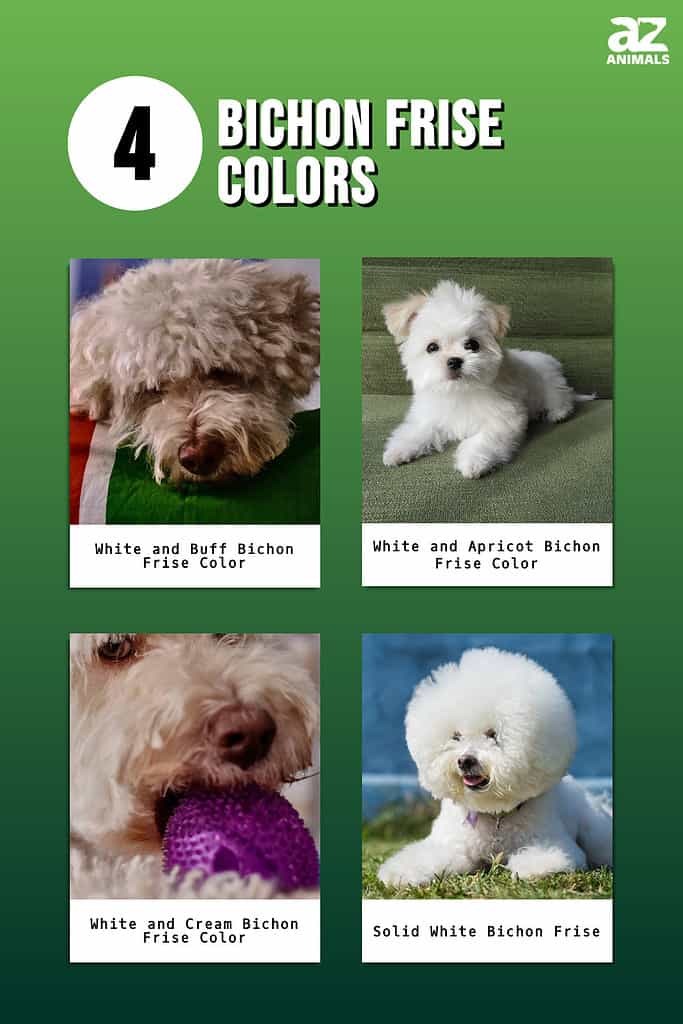
The Bichon Frise is a French dog breed that makes fantastic lap dogs. In addition, people love them because of their affectionate and cheerful nature. These dogs can be a bit sensitive, but they are incredibly gentle towards their owners. Bichon Frise makes the ideal playmates for kids, but they are also a great option for seniors in need of a loving companion.
As a result, their adaptability is why they rank amongst the 50 most popular dog breeds in the USA. Owning one of these fur balls is a no-brainer, but know that you have options before contacting a breeder, rescue, or shelter. There are four Bichon Frise colors, and this article will rank them from rarest to the most common.
1. White and Buff Bichon Frise Color
The white and buff-colored Bichon Frise is the rarest color of the breed. While puppies might look similar to the white and apricot or the white and cream variations, it does become more distinguished as they get older. The buff color is identified as a light brownish-yellow color, similar to buff leather. However, others describe this variation as an earthy color. The unique buff color is mostly present in the chest and body. But it can also appear on the muzzle, ears, face, and legs.
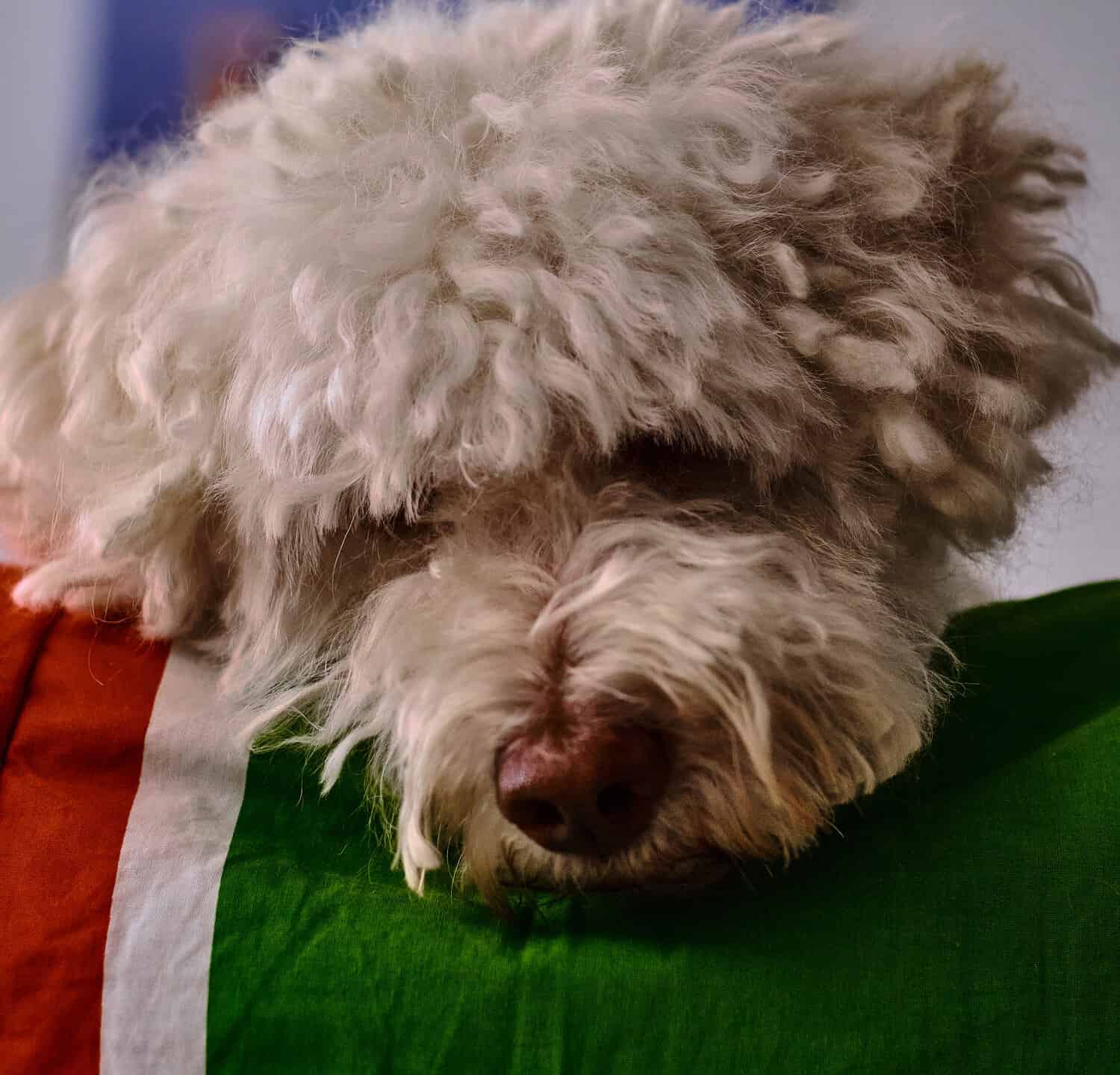
The white and buff-colored Bichon Frise is the rarest color of the breed.
Image: Oakland Images, Shutterstock
©Oakland Images/Shutterstock.com
2. White and Apricot Bichon Frise Color
While not as rare as the white and buff Bichon Frise, the white and apricot variation is also hard to find. Their bodies are mostly white, but the apricot color appears on the face, ears, and body. However, some only have apricot on one of the above-mentioned areas. Breeders define the apricot color as a light yellowish-orange, similar to the fruit; however, it is slightly paler than an apricot. The color gives the white coat a nice warm contrast. If you find a solid apricot Bichon Frise, chances are it’s mixed with a poodle; therefore, it’s not a pure breed.
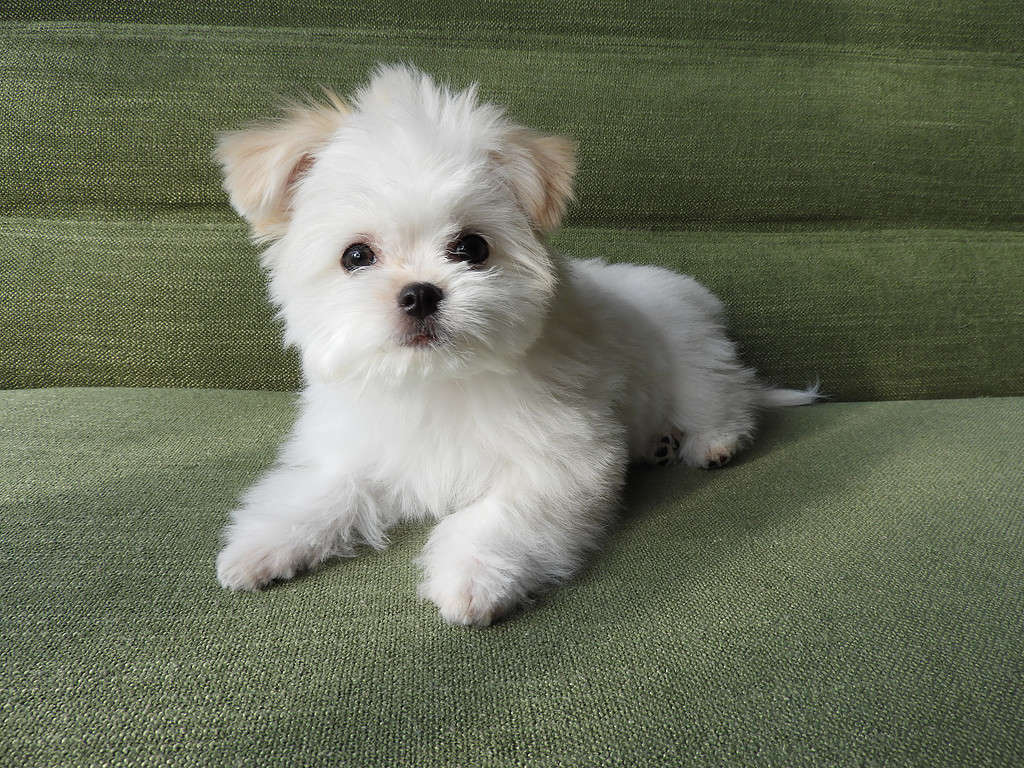
While not as rare as the white and buff Bichon Frise, the white and apricot variation is also hard to find.
©iStock.com/Chiemi Kumitani
3. White and Cream Bichon Frise Color
The white and cream Bichon Frise color might not be as rare as the buff or apricot, but they are still difficult to find. These dogs get their cream color from the extreme dilution of the yellow or red pigment called phaeomelanin. Furthermore, similarly to the other non-solid white Bichon Frise, the cream-colored variation usually only has cream patches on the chest, body, ears, or face. Therefore, telling them apart from the solid white is difficult, especially as pups.
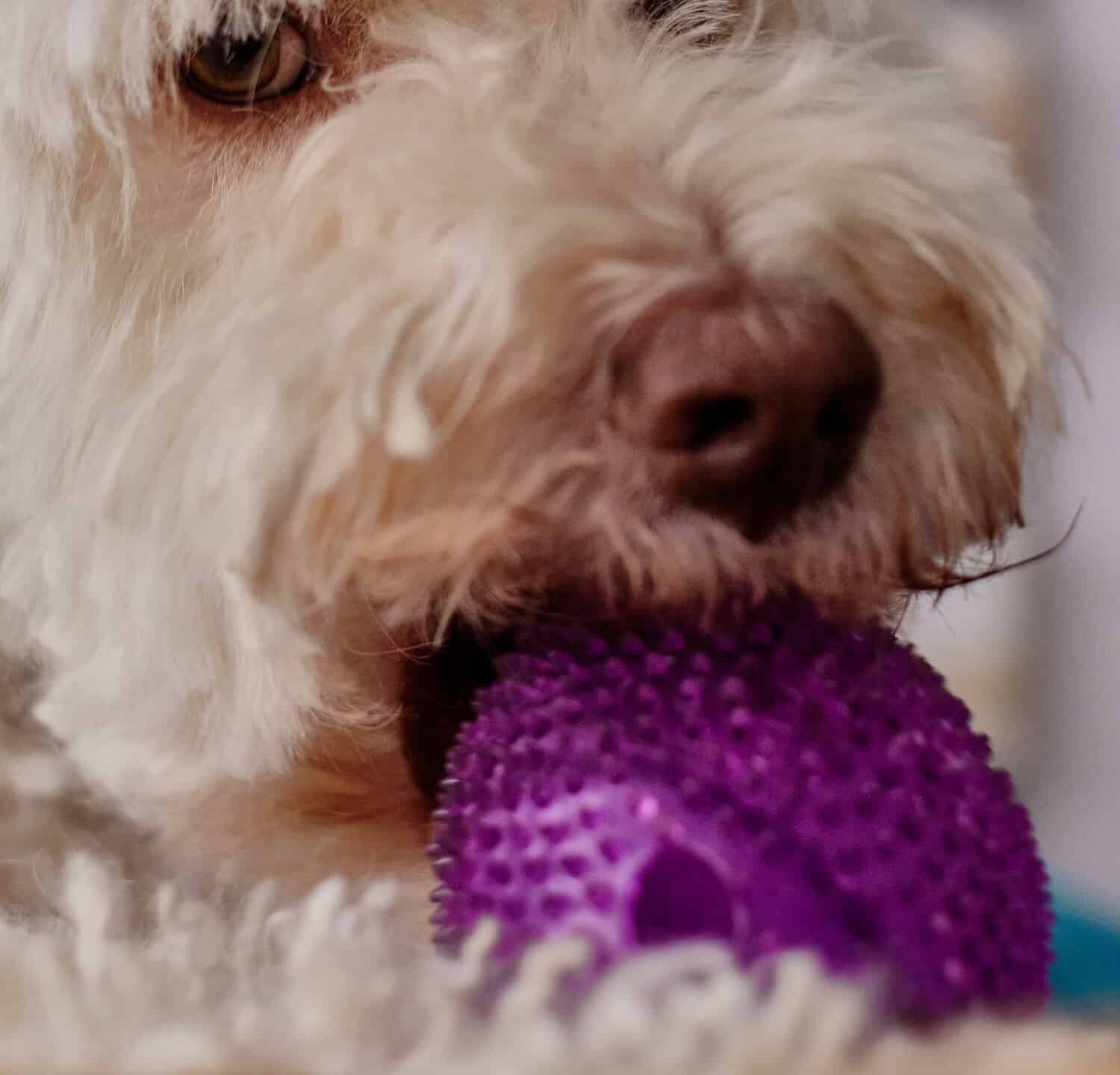
The cream-colored variation usually only has cream patches on the chest, body, ears, or face. Therefore, telling them apart from the solid white is difficult, especially as pups.
Image: Oakland Images, Shutterstock
©Oakland Images/Shutterstock.com
4. Solid White Bichon Frise
The most popular and common Bichon Frise color is solid white. While their coats are lavish and fluffy, they do get dirty really easily. Therefore, they require a lot of grooming but try not to bathe them too often. If you bathe your dog frequently, it washes off all its natural oils, which moisturize the skin. So, instead, brush them, or wipe them down with a damp cloth. The white Bichon Frise is the original, first adopted by the National French Kennel Club in the 1930s. This breed rose to fame after the novel, “The Adventures of Tintin,” which featured a small, white, fluffy terrier named Milou.
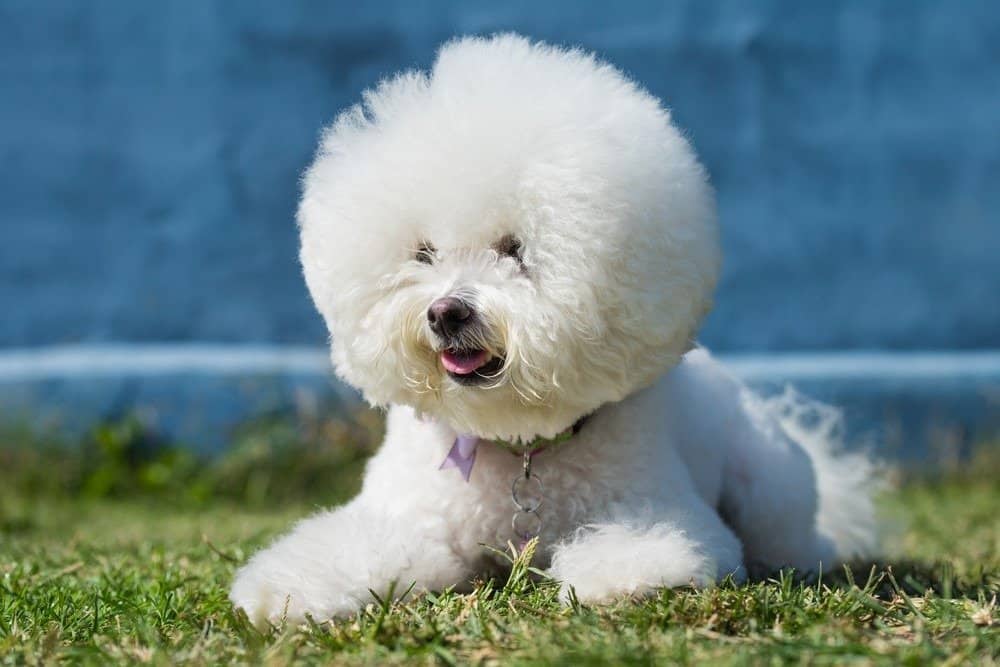
The most popular and common Bichon Frise color is solid white.
©Radovancev Zarko/Shutterstock.com
Bichon Frise Personality
The Bichon Frise is notorious for its cheerful personality and need for attention. While playful, this breed has an independent streak, but they don’t like being alone. In fact, Bichon Frise suffers from separation anxiety if left to their own devices for too long. When this happens, they will act out in a destructive manner. For example, they may chew or tear up anything they can get their paws on. Therefore, they don’t do well in homes where their owners are rarely there.
These dogs are highly intelligent and require obedience training as soon as possible to groom their skills. Their temperament can vary depending on factors like training, socialization, and genetics. However, puppies are playful and curious. So, when picking one from a litter, choose the middle ground, not the boisterous one, beating up its siblings or the quiet one in the corner. In addition, insist on meeting the parents to assess their temperaments, which are usually hereditary.
Early socialization is key when raising a Bichon Frise. The more you expose your pup to different sights, sounds, people, and animals, the better. By socializing your pup, it helps them become well-rounded. You can do this by:
- Enrolling it in puppy classes
- Inviting guests to your home regularly
- Taking it to busy parks
- Go for walks in dog-friendly areas
- Introduce your pup to the neighbors
Bichon Frise Health
Caring for your Bichon Frise requires more than just grooming, training, and attention. You also need to ensure your pup is healthy. While these dogs are generally healthy, they are plagued by some health concerns, including:
Bladder Issues
Bladder infections and stones are common in this breed. There are several factors that cause these issues, including a diet with excessive:
- Magnesium
- Protein
- Phosphorus
In addition, bladder issues are also caused by long periods of time between urination and bacterial or viral infections. Therefore, watch for symptoms like bloody urine, urinating frequently, difficulty urinating, and loss of appetite. If you see any of these signs, take your Bichon Frise to the vet immediately.
Allergies
Bichon Frise are plagued by allergies caused by several factors, including food or contact allergies. Additionally, these dogs are notorious for being sensitive to fleabites. Therefore, if you see your pup licking or scratching its paws or face excessively, there’s a good chance it has some sort of allergy. Unfortunately, the only way to get a clear answer is by taking your pup to the vet.
Patellar Luxation
This health condition, also known as slipped stifles, is a common issue in small dogs. When your dog suffers from patellar luxation, it means its kneecap is dislocated. For example, the knee joint slides out of place. It usually occurs on one or both of the hind legs and is very painful. Luckily, there is a treatment for this condition, but some dogs are crippled for life.
Vaccination Sensitivity
Some Bichon Frise dogs suffer from vaccination sensitivity, even from the most routine vaccinations. Therefore, after each injection, you need to check for the following symptoms:
- Facial swelling
- Hives
- Pain
- Lethargy
Unfortunately, on occasion, the sensitivity is so bad the dog can develop complications that can be fatal. So, if you notice any of the above mentioned symptoms, take your Bichon Frise to the vet immediately.
Hip Dysplasia
Unfortunately, hip dysplasia is inherited and occurs when the thighbone doesn’t fit into the hip joint. It’s hard to diagnose hip dysplasia in dogs because some won’t show any signs of discomfort. However, others may experience pain and lameness. The best way to determine whether your Bichon Frise has hip dysplasia is with an X-ray. Regardless, as the dog ages, arthritis can develop. Reputable breeders will never breed dogs with hip dysplasia because it is hereditary. Therefore, when purchasing your pup, ask the breeder to prove its parents have been tested for this condition and other health issues. If they can’t provide you with this proof, rather use a different breeder.
Summary of Bichon Frise Colors: Rarest to Most Common
| Colors | ||
|---|---|---|
| 1 | White and Buff | Rare |
| 2 | White and Apricot | Somewhat Rare |
| 3 | White and Cream | Somewhat Rare |
| 4 | Solid White | Most Common |
The photo featured at the top of this post is © Ieva Tvaronavicute/Shutterstock.com
Ready to discover the top 10 cutest dog breeds in the entire world?
How about the fastest dogs, the largest dogs and those that are -- quite frankly -- just the kindest dogs on the planet? Each day, AZ Animals sends out lists just like this to our thousands of email subscribers. And the best part? It's FREE. Join today by entering your email below.
Thank you for reading! Have some feedback for us? Contact the AZ Animals editorial team.






